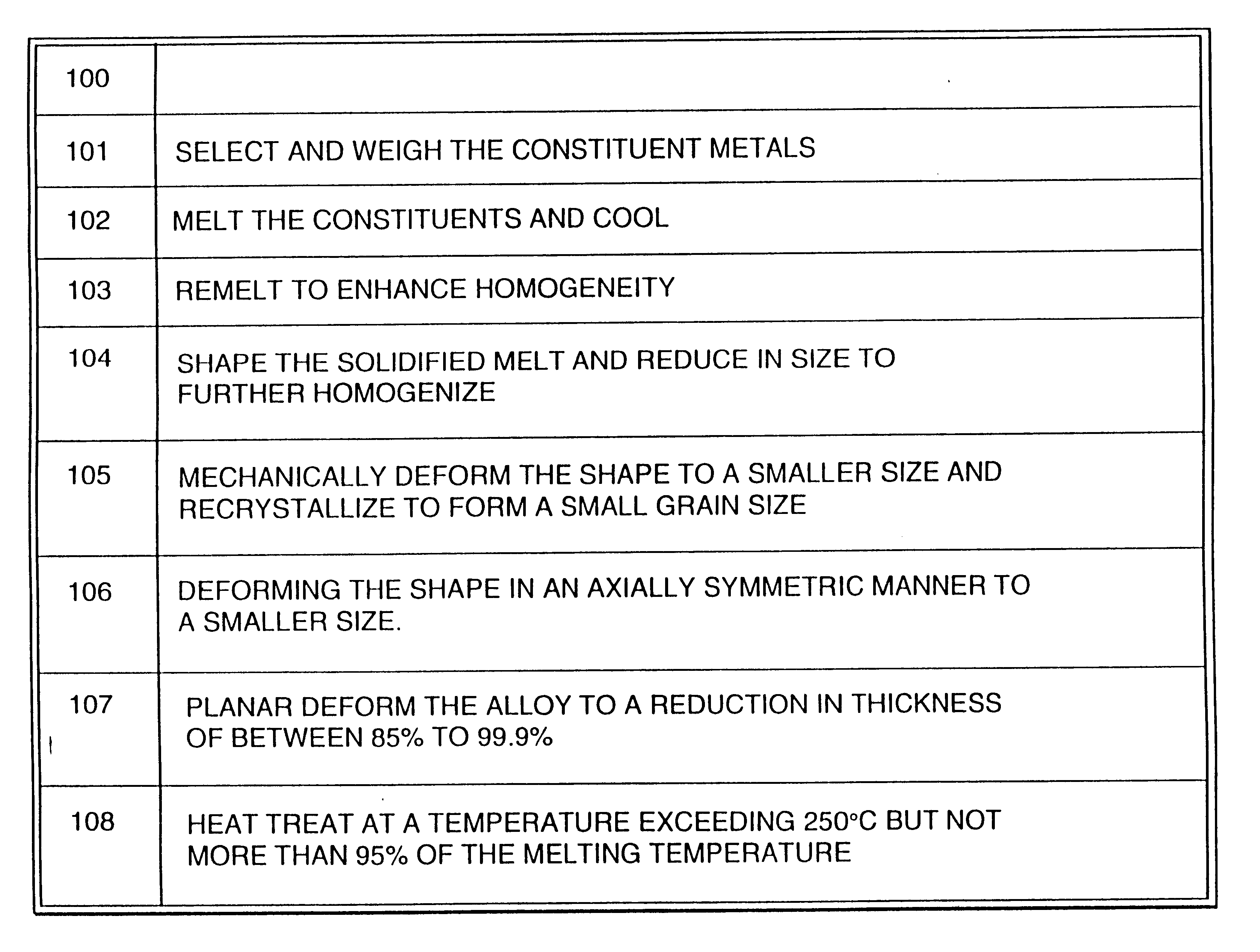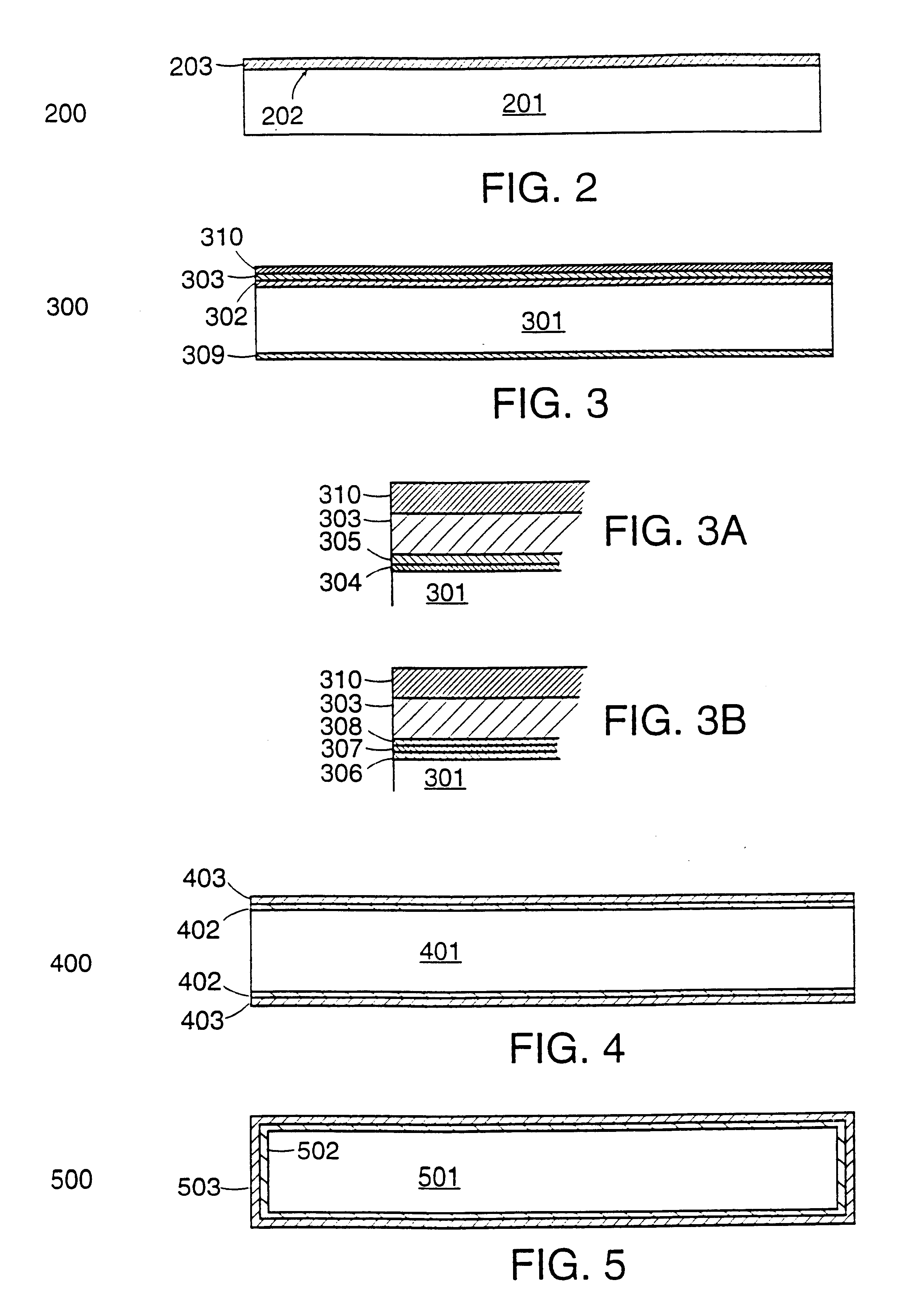Alloy materials
a technology of alloys and materials, applied in the field of alloys, can solve the problems of limited mechanical strength of superconductors, substrates that cannot meet all these requirements easily, and pure metals may exhibit certain properties
- Summary
- Abstract
- Description
- Claims
- Application Information
AI Technical Summary
Benefits of technology
Problems solved by technology
Method used
Image
Examples
example 1
A cube-textured copper-nickel alloy was produced as follows. Ni and Cu pieces (pellets mixed with coarse powders) were weighed in a ratio of 68 at % Cu and 32 at % Ni. The pieces were mixed and loaded in a water cooled copper hearth of an arc melter which operates under a protective atmosphere. The Cu and Ni mixture was melted and solidified several times, to ensure adequate mixing, at a temperature well above the melting temperatures for several minutes. The solidified and cooled alloy was mechanically formed in the shape of a solid cylinder, and was swaged to a smaller diameter of approximately 3 mm. No homogenization anneal was applied in this example. Subsequently, the swaged cylinder was rolled, using 10% deformation per pass, to a total reduction of 98% without any intermediate stress anneal process. The resulting tape was heat treated at 850.degree. C. for 4 hrs using a protective gas of 95% argon and 5% hydrogen. This tape showed mainly a single, bi-axial cube texture, which...
example 2
A 32 mm diameter oxygen free copper can was loaded with a mixture of Cu and Ni pieces, and the overall exact stoichiometry (including the weight of the copper can) was further adjusted with Cu powder, to a mixture of 16 at % Ni, 84 at % Cu. This can was placed inside a 38 mm diameter thin-walled alumina crucible and heated under vacuum using a ALLOY MATERIALS induction melter at about 1170.degree. C., for up to 5 minutes. After solidification, the alloy was removed from the crucible. To enhance homogeneity, the cast was remelted using a similar crucible and the same induction melter, again under a protective atmosphere and at the same conditions. The cast alloy, which had a cylindrical shape, was machined to a diameter of 31 mm and swaged to a 17 mm diameter bar. This bar was homogenized at 950.degree. C. for 8 hrs. It was machined to a 16 mm diameter billet, suitable for hydrostatic extrusion. It was extruded to a 3 mm diameter ire and subsequently rolled using a reversible directi...
example 3
A similar process was followed as in Example 2, but the mixture was 26.5 at % Ni and 73.5 at % Cu. The alloy was extruded to a tape, which was rolled to a reduction in thickness of 96%. The tape was heat treated for 4 hours at 850 degrees Celcius. The final tape made with this alloy had a single bi-axial cube texture. A {111} and {200} pole figure of this alloy is shown in FIG. 6.
PUM
| Property | Measurement | Unit |
|---|---|---|
| Curie temperature | aaaaa | aaaaa |
| Curie temperature | aaaaa | aaaaa |
| Curie temperature | aaaaa | aaaaa |
Abstract
Description
Claims
Application Information
 Login to View More
Login to View More - R&D
- Intellectual Property
- Life Sciences
- Materials
- Tech Scout
- Unparalleled Data Quality
- Higher Quality Content
- 60% Fewer Hallucinations
Browse by: Latest US Patents, China's latest patents, Technical Efficacy Thesaurus, Application Domain, Technology Topic, Popular Technical Reports.
© 2025 PatSnap. All rights reserved.Legal|Privacy policy|Modern Slavery Act Transparency Statement|Sitemap|About US| Contact US: help@patsnap.com



